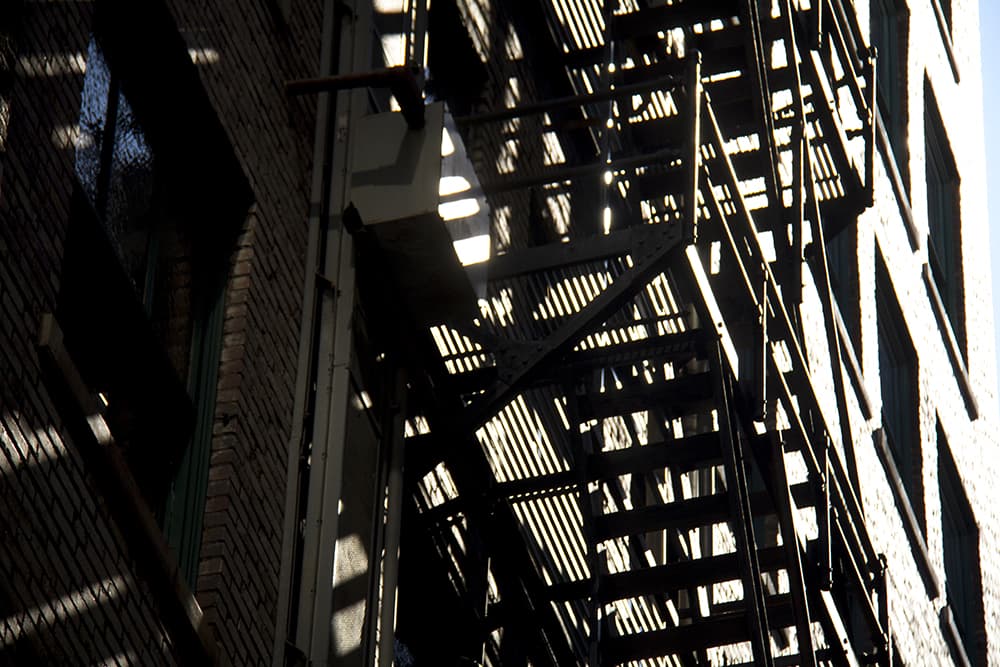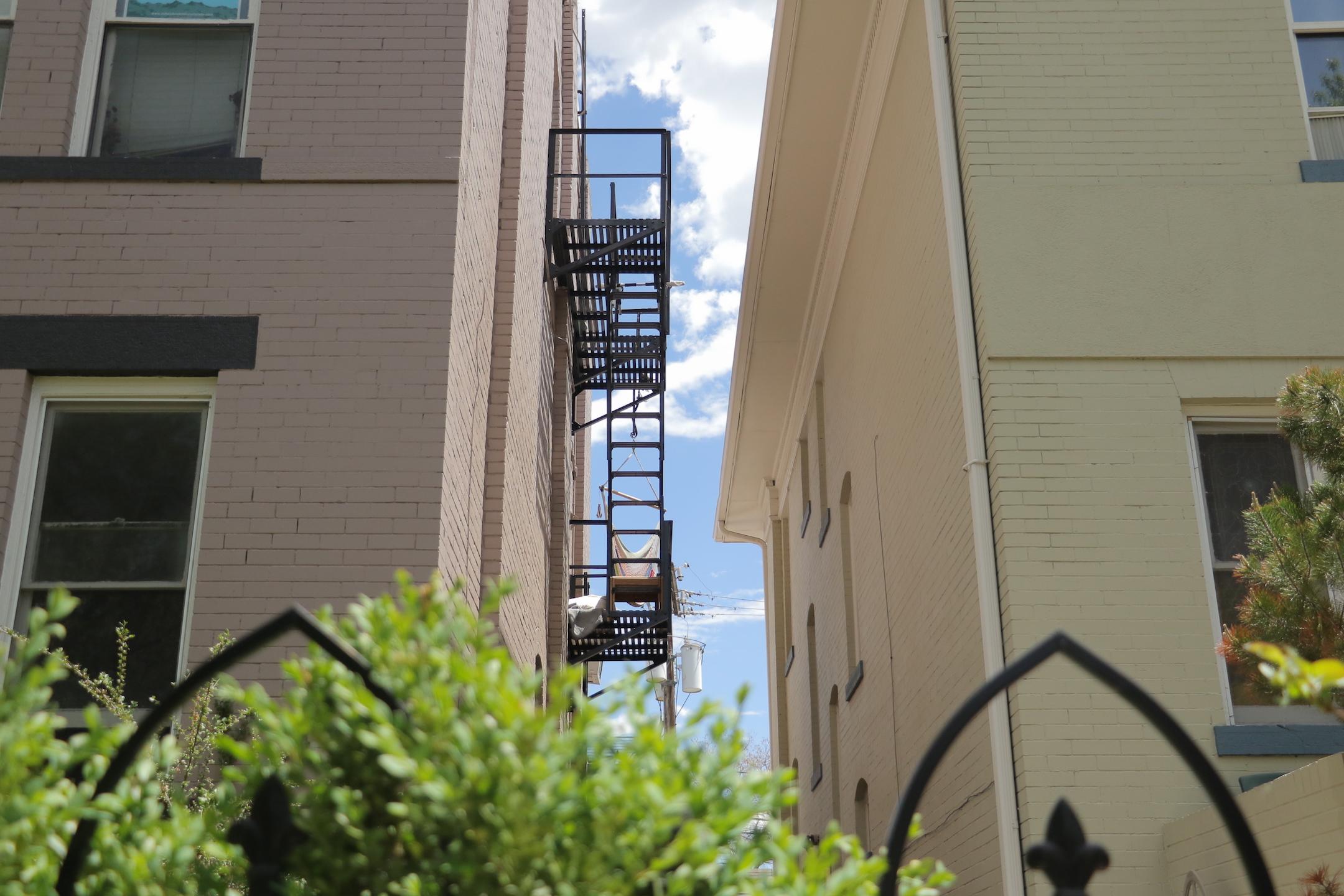Let's answer an obscure question about your city.
My editor, Ashley, asked me to find out why Denver doesn't seem to have fire escapes, so I went to find the real answer instead of pretending I knew it already.
Thanks to Captain Greg Pixley of the Denver Fire Department, we now know the truth.
"Because fire escapes are antiquated," Pixley told me. "They're from the '60s, the '50s, the '40s."
Yes, fire escapes may double as porches and look like charming urban artifacts, but they are sketchy. Fire escapes are exposed to the weather, meaning the nuts, bolts and welding holding the iron together -- and to the building -- can corrode and rust. The escapes would work if properly maintained, but that's the problem. They often aren't.

So. Given the age of Denver compared to say, New York, a city that grew taller, faster and earlier, it makes sense that we have fewer buildings with fire escapes. Factor in Denver's urban renewal movement that razed historic buildings to build parking lots and it makes even more sense.
The DFD (and the city's building code) prefer fire-resistant stairwells in the core of the building.
"I want to say that's like four to eight hours of fire resistance before it will start to break apart," Pixley said.
These internal fire escapes are typically the strongest part of new towers, and the stairwells are pressurized to prevent smoke from flowing in.
If your building doesn't have a fire escape or a fire-averse stairwell, it probably has a "passive smoke control system." It entails a chimney-type vent that theoretically draws the smoke through it because hot air rises. But it's not very efficient, Pixley said, so those aren't that common either.
OK. Now you know everything you wanted and did not want to know about fire escapes.












